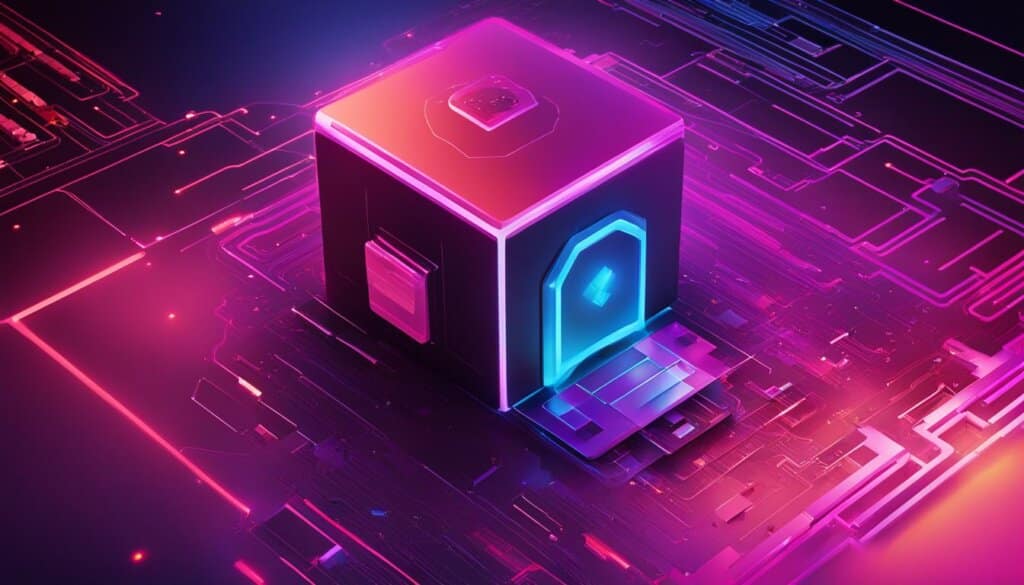Table of Contents
Cybersecurity in Firewall Management, Network security, and IT security are critical aspects of protecting organizations from cyber threats and ensuring the safety of sensitive data.
Next-generation firewalls provide a comprehensive solution to enhance network security. With their advanced capabilities, these firewalls go beyond traditional methods and offer application-specific rules, protection against malware, and the ability to detect and block anomalous behavior.
By incorporating features like intrusion prevention systems and sandboxing, next-generation firewalls play a crucial role in safeguarding networks from cyber threats. Acting as the first line of defense, they inspect all incoming and outgoing traffic, applying security policies to permit or block traffic, ensuring that corporate systems remain protected.
These firewalls operate at the application layer of the TCP/IP stack, allowing for advanced security measures. They can inspect network traffic, identify and block threats, and provide network monitoring capabilities.
In addition to their security benefits, next-generation firewalls also streamline security infrastructure, making it easier and cost-effective to maintain and control.
Overall, next-generation firewalls are indispensable in achieving robust cybersecurity and protecting organizations’ valuable information.
The Role of Next-Generation Firewalls
Next-generation firewalls play a crucial role in protecting networks from cyber threats. They act as the first line of defense by inspecting all incoming and outgoing traffic and applying security policies to permit or block traffic. These firewalls incorporate additional features like intrusion prevention systems, antimalware protection, and sandboxing. They are designed to identify and block advanced threats before they can harm corporate systems.
By leveraging advanced techniques such as deep packet inspection and behavioral analysis, next-generation firewalls provide a comprehensive approach to network security. They can detect and prevent a wide range of cyber threats, including malware, ransomware, and zero-day attacks. With the ability to monitor and analyze network traffic in real time, these firewalls enable organizations to identify and respond to security incidents promptly.
Moreover, next-generation firewalls offer granular control over applications and user activities, allowing organizations to define specific policies to govern access and usage. This feature helps prevent unauthorized access to sensitive data and ensures compliance with industry regulations. Additionally, next-generation firewalls can integrate with threat intelligence platforms, enabling organizations to stay up to date with emerging threats and implement proactive security measures.
Overall, next-generation firewalls provide advanced security capabilities that are necessary in today’s evolving threat landscape. With their ability to inspect and analyze network traffic, block malicious activities, and enforce security policies, these firewalls are instrumental in safeguarding the integrity and confidentiality of organizational networks.
Key Features of Next-Generation Firewalls
Next-generation firewalls offer a range of key features that enhance network security:
- Application control: Provides granular control over applications and user activities, allowing organizations to enforce usage policies and prevent unauthorized access.
- Deep packet inspection: Allows thorough inspection of network traffic at the application layer, enabling the identification and blocking of malicious activities.
- Intrusion prevention system (IPS): Offers real-time detection and prevention of network intrusions, protecting against known and unknown threats.
- Threat intelligence integration: Integrates with threat intelligence platforms, providing access to up-to-date information on emerging threats and enabling proactive security measures.
- Behavioral analysis: Analyzes network behavior to detect and block anomalous activities that may indicate a security breach or a potential attack.
Table: Comparison of Next-Generation Firewalls vs Traditional Firewalls
| Features | Next-Generation Firewalls | Traditional Firewalls |
|---|---|---|
| Inspection level | Application layer | IP addresses and ports |
| Advanced threat detection | Yes | No |
| Intrusion prevention | Yes | No |
| Integration with threat intelligence | Yes | No |
| Granular application control | Yes | No |
How Next-Generation Firewalls Work
Next-generation firewalls (NGFWs) operate at the application layer of the TCP/IP stack, allowing them to apply advanced security measures and provide comprehensive network protection. Unlike traditional firewalls that focus on traffic control based on IP addresses and ports, NGFWs go beyond by incorporating functions like intrusion prevention, sandboxing, and application-specific controls.
NGFWs inspect network traffic in real time, identifying and blocking threats based on predefined security policies. By enforcing security policies at the application, port, and protocol levels, NGFWs can detect and prevent sophisticated attacks before they can harm corporate systems. This level of granularity allows for more effective threat detection and response.
Furthermore, NGFWs provide network monitoring capabilities, allowing security administrators to gain visibility into the network and detect any suspicious activities. By monitoring and analyzing network traffic, NGFWs can identify patterns and behaviors indicative of potential threats, providing early warning signs and allowing for timely intervention.
In summary, NGFWs offer a multi-layered approach to network security, combining traditional firewall functions with advanced features like intrusion prevention and network monitoring. By operating at the application layer and inspecting traffic in real time, NGFWs provide enhanced protection against evolving cyber threats for organizations of all sizes.

Key Features of Next-Generation Firewalls
| Feature | Description |
|---|---|
| Application and User Control | NGFWs offer granular control over network applications and user access, allowing organizations to define specific rules and policies for different applications and users. |
| Encrypted Traffic Inspection | NGFWs can decrypt and inspect encrypted network traffic to detect and block any malicious activities or threats hidden within encrypted communication. |
| Integrated Intrusion Prevention Systems (IPS) | NGFWs incorporate IPS capabilities to detect and prevent known and unknown attacks, providing an additional layer of protection against zero-day vulnerabilities and advanced threats. |
| Advanced Malware Detection | NGFWs employ advanced techniques like behavioral analysis, machine learning, and sandboxing to detect and block malware before it can enter the network. |
| Threat Intelligence Integration | NGFWs can leverage threat intelligence feeds from external sources to enhance threat detection and response capabilities, keeping organizations protected against emerging threats. |
Benefits of Next-Generation Firewalls
Next-generation firewalls provide numerous benefits that contribute to data protection, network defense, and overall information security. With their advanced features and capabilities, these firewalls offer organizations a robust security solution to safeguard their networks and sensitive data.
- Enhanced Data Protection: Next-generation firewalls block malware before it enters the network, minimizing the risk of data breaches and unauthorized access. By inspecting all incoming and outgoing traffic, these firewalls ensure that only legitimate and secure data passes through.
- Defense against Advanced Threats: These firewalls are effective in combating advanced persistent threats (APTs) by incorporating features like intrusion prevention systems and sandboxing. They detect and block sophisticated attacks before they can compromise corporate systems.
- Integration with Threat Intelligence: Next-generation firewalls can be integrated with threat intelligence services, allowing organizations to receive real-time updates on emerging threats. This integration enhances the firewall’s ability to identify and respond to new and evolving cyber threats.
- Cost-Effective Device Security: By offering features like application awareness, inspection services, and protection systems, next-generation firewalls provide a low-cost option for improving device security. These firewalls streamline security infrastructure, making it easier and more cost-effective to maintain and control.
- Network Defense: Next-generation firewalls contribute to overall network defense by providing a comprehensive approach to security. With application-specific controls, advanced threat detection, and enhanced monitoring capabilities, these firewalls help organizations protect their networks from a wide range of cyber threats.
Implementing next-generation firewalls is a strategic investment for organizations looking to enhance their data protection, strengthen network defense, and ensure information security. By leveraging the advanced features and capabilities of these firewalls, businesses can proactively mitigate cyber risks and safeguard their critical assets.
Next-Generation Firewalls vs Traditional Firewalls
Next-generation firewalls and traditional firewalls have significant differences in terms of capabilities and level of security. While traditional firewalls focus on traffic control based on IP addresses and ports, next-generation firewalls operate at the application layer, providing deep-packet inspection.
Next-generation firewalls offer advanced features such as:
- Intrusion Prevention: These firewalls incorporate intrusion prevention systems that can detect and prevent sophisticated attacks before they can harm the network.
- Application Control: Next-generation firewalls have the ability to identify and control specific applications, allowing organizations to enforce policies and protect against unauthorized access.
- Threat Intelligence Integration: Next-generation firewalls can leverage threat intelligence feeds, keeping organizations updated on the latest security threats and providing better protection.
Compared to traditional firewalls, next-generation firewalls provide a higher level of security and a more comprehensive approach to network protection. They go beyond basic traffic filtering and offer features like advanced malware detection, encrypted traffic inspection, and application awareness. By incorporating these features, next-generation firewalls can detect and block a wide range of threats, ensuring the network remains secure.
Organizations seeking robust network security and effective firewall management should consider implementing next-generation firewalls. These advanced security solutions offer enhanced protection against cyber threats and provide greater control over network traffic. With their ability to inspect traffic at the application layer, next-generation firewalls can significantly improve network security and contribute to a comprehensive network defense strategy.
Table: Key Differences between Next-Generation Firewalls and Traditional Firewalls
| Next-Generation Firewalls | Traditional Firewalls |
|---|---|
| Operate at the application layer, providing deep-packet inspection | Focus on traffic control based on IP addresses and ports |
| Offer advanced features like intrusion prevention, application control, and threat intelligence integration | Primarily provide basic traffic filtering |
| Provide better protection against advanced threats | May be less effective in detecting and blocking sophisticated attacks |
| Can detect and block a wide range of threats, including malware | May have limitations in detecting and blocking advanced malware |
The Core Features of Next-Generation Firewalls
Next-generation firewalls offer a range of core features that make them highly effective in network security, providing robust protection against cyber threats. These features include:
- Application and User Control: Next-generation firewalls offer granular control over applications and users, allowing organizations to define specific access policies and enforce security measures based on individual users or applications.
- Encrypted Traffic Inspection: With the increasing use of encryption to protect sensitive data, next-generation firewalls have the capability to inspect encrypted traffic, ensuring that malicious activities are detected and blocked.
- Integrated Intrusion Prevention Systems (IPS): Next-generation firewalls combine traditional firewall capabilities with intrusion prevention systems, detecting and preventing unauthorized access attempts and malicious activities.
- Advanced Malware Detection: Next-generation firewalls use advanced techniques like sandboxing and behavioral analysis to identify and block emerging and zero-day malware threats.
- Threat Intelligence Integration: By leveraging threat intelligence feeds, next-generation firewalls stay updated with the latest information about known threats, enabling them to proactively block malicious activities.
These core features work together to provide enhanced network security, allowing organizations to detect and prevent cyber threats effectively.
To give you a better understanding of the capabilities of next-generation firewalls, here’s a detailed table showcasing the core features and their benefits:
| Core Features | Benefits |
|---|---|
| Application and User Control | – Granular control over network access – Enforce security policies based on users and applications |
| Encrypted Traffic Inspection | – Detect and block malicious activities in encrypted traffic – Mitigate the risk of data exfiltration |
| Integrated Intrusion Prevention Systems (IPS) | – Detect and prevent unauthorized access attempts – Block known attack signatures and patterns |
| Advanced Malware Detection | – Identify and block emerging and zero-day malware threats – Protect against targeted attacks |
| Threat Intelligence Integration | – Stay updated with the latest information about known threats – Proactively block malicious activities |
Next-generation firewalls with these core features are crucial components of a comprehensive network security strategy, providing organizations with the necessary tools to defend against cyber threats.

Firewall Management Considerations
When implementing and managing next-generation firewalls, organizations should consider several factors to ensure effective firewall management. These include:
- Policies and Configuration: Define clear security policies and configurations that align with the organization’s network security requirements. Regularly review and update these policies to adapt to evolving cyber threats.
- Monitoring and Analysis: Implement robust monitoring and analysis tools to continuously monitor network traffic, detect anomalies, and identify potential security breaches.
- Regular Updates and Patch Management: Keep the next-generation firewalls up to date with the latest security patches and firmware updates to address vulnerabilities and ensure optimal performance.
- Integration with Other Security Solutions: Integrate next-generation firewalls with other security solutions like intrusion detection systems (IDS), security information and event management (SIEM) systems, and endpoint protection platforms for enhanced network security.
- Ongoing Training and Education: Provide regular training and education to IT security teams responsible for managing and maintaining next-generation firewalls to ensure they are equipped with the necessary skills and knowledge to effectively handle network security threats.
By considering these factors, organizations can optimize their firewall management practices and ensure the overall effectiveness of their network security infrastructure.
Types of Next-Generation Firewalls
When it comes to firewall management and IT security, organizations have various types of next-generation firewalls to choose from. Each type is designed to cater to specific needs and requirements, providing enhanced security and network protection. Let’s explore some of the most common types of next-generation firewalls:
1. Rugged Firewalls
Rugged firewalls are built to withstand harsh environments, making them ideal for industrial and outdoor use cases. They provide robust security for critical infrastructure, such as power plants, manufacturing facilities, and transportation systems. Rugged firewalls offer advanced threat prevention capabilities and can operate reliably in extreme temperatures and conditions.
2. Branch Office Firewalls
Branch office firewalls are designed for small to medium-sized businesses with multiple remote locations. They provide secure connectivity and protection for branch offices, ensuring that network traffic is inspected and controlled. These firewalls offer features like VPN connectivity, application control, and centralized management, making them suitable for organizations with distributed networks.
3. Enterprise Firewalls
Enterprise firewalls are geared towards large organizations that require high-performance and scalable security solutions. They offer advanced security features, such as threat prevention, intrusion prevention, and advanced malware protection. Enterprise firewalls are capable of handling heavy network traffic and provide centralized management for easy administration across the entire organization.
4. Data Center Firewalls
Data center firewalls are specifically designed for securing data centers and cloud environments. They provide comprehensive security for virtualized environments, offering features like micro-segmentation, virtual machine (VM) integration, and granular control over application traffic. Data center firewalls ensure the protection of sensitive data and prevent unauthorized access to critical infrastructure.
5. Cloud Firewalls
Cloud firewalls are built to secure cloud-based applications and resources. They provide security controls within cloud environments, protecting organizations from threats targeting cloud infrastructure and applications. Cloud firewalls typically offer features like virtual network segmentation, web application firewall (WAF) capabilities, and integration with cloud service providers’ security services.
6. Firewall as a Service (FWaaS) Solutions
FWaaS solutions are cloud-based firewalls that are delivered as a service. They offer organizations the flexibility and scalability of a cloud-native solution, while still providing robust network security. FWaaS solutions are easy to deploy and manage, making them suitable for businesses looking for a cost-effective and hassle-free firewall management option.
Choosing the right type of next-generation firewall depends on the specific needs and requirements of your organization. Consider factors such as the scale of your network, the nature of your business, and the level of security you require. Consulting with IT security professionals and conducting thorough evaluations will help you make an informed decision and ensure that your network remains protected against evolving cyber threats.

How to Choose the Right Next-Generation Firewall
Choosing the right next-generation firewall is crucial for effective IT security and firewall management. With so many options available, it’s important to evaluate different solutions based on specific requirements. Here are some key factors to consider:
1. Organization’s Size and Network Infrastructure
Take into account the size of your organization and the complexity of your network infrastructure. Larger organizations may require more scalable firewalls that can handle higher traffic volumes. Consider whether the firewall can seamlessly integrate with your existing network environment and hardware.
2. Security Needs
Assess your organization’s specific security needs. Identify the types of threats you are most likely to face and choose a next-generation firewall that can effectively protect against them. Look for features such as application awareness, integrated intrusion prevention systems, and advanced malware detection.
3. Scalability and Performance
Ensure that the next-generation firewall you choose is scalable and can handle your organization’s future growth. Evaluate the firewall’s performance under different loads and scenarios to ensure it can meet your network’s demands.
4. Ease of Management
Consider the ease of management of the firewall solution. Look for features such as centralized management consoles, intuitive user interfaces, and automation capabilities. A user-friendly interface and streamlined management processes can save time and resources in firewall management.
| Factor | Considerations |
|---|---|
| Organization’s Size and Network Infrastructure | Assess the scalability and compatibility of the firewall with your network environment. |
| Security Needs | Determine the specific security features required to protect against potential threats. |
| Scalability and Performance | Evaluate the firewall’s performance under different loads and its ability to scale with your organization. |
| Ease of Management | Consider the user-friendliness of the firewall’s management interface and its automation capabilities. |
Consider Check Point Quantum NGFW
When it comes to network security and firewall management, Check Point Quantum NGFW is a top contender. This advanced next-generation firewall offers a wide range of features and benefits that can greatly enhance the security of your organization’s network.
With Check Point Quantum NGFW, you can take advantage of powerful capabilities such as application and user control, encrypted traffic inspection, integrated intrusion prevention systems, and threat intelligence integration.
One of the key advantages of Check Point Quantum NGFW is its ability to provide robust protection against cyber threats. Whether your users are located in the office or working remotely, this firewall ensures their security by detecting and blocking malicious activities in real-time.
Considering the importance of network security and the ever-increasing threat landscape, it is crucial to choose a reliable and effective solution. Check Point Quantum NGFW offers the necessary features and functionalities to protect your network and keep your organization’s sensitive information safe from cyber attacks.
“Check Point Quantum NGFW provides robust protection against cyber threats and ensures the security of users and devices regardless of their location.”
Table: Key Features of Check Point Quantum NGFW
| Feature | Description |
|---|---|
| Application and User Control | Allows granular control over application usage and user access, improving security and productivity. |
| Encrypted Traffic Inspection | Enables the inspection of encrypted traffic to detect and prevent advanced threats hiding in encrypted connections. |
| Integrated Intrusion Prevention Systems | Detects and blocks network attacks and vulnerabilities, providing proactive defense against emerging threats. |
| Threat Intelligence Integration | Utilizes up-to-date threat intelligence feeds to enhance threat detection and response capabilities. |

Conclusion
Next-generation firewalls play a critical role in achieving robust cybersecurity and effective firewall management. With their advanced security features, streamlined infrastructure, and protection against a wide range of cyber threats, organizations can significantly enhance their network security and ensure the protection of sensitive information.
By implementing next-generation firewalls, organizations can defend against advanced attacks and improve overall information security. These firewalls offer application-specific rules, malware protection, and the ability to detect and block anomalous behavior, making them a powerful defense against cyber threats.
When choosing a next-generation firewall solution, it is essential to consider factors such as the organization’s specific needs, network infrastructure, and security requirements. Features like application awareness, integrated intrusion prevention systems, encrypted traffic inspection, advanced malware detection, and threat intelligence integration should be evaluated to ensure the right fit for the organization.
In conclusion, next-generation firewalls are key components of a comprehensive cybersecurity strategy. They provide enhanced network security, streamline firewall management, and contribute to overall information security. By selecting the right next-generation firewall solution, organizations can strengthen their defense against cyber threats and protect their valuable data.
FAQ
What are the benefits of next-generation firewalls?
Next-generation firewalls offer enhanced security compared to traditional firewalls. They provide application-specific rules, protection against malware, and the ability to detect and block anomalous behavior. They can also receive updates from threat intelligence networks and protect against advanced threats. Additionally, next-generation firewalls streamline security infrastructure, making it easier and cost-effective to maintain and control.
How do next-generation firewalls differ from traditional firewalls?
Next-generation firewalls operate at the application layer of the TCP/IP stack, allowing them to apply advanced security measures. They go beyond traditional firewalls by incorporating functions like intrusion prevention, sandboxing, and application-specific controls. Next-generation firewalls provide a higher level of security and a more comprehensive approach to network protection.
What core features do next-generation firewalls have?
Next-generation firewalls have several core features that make them effective in network security. These features include application and user control, encrypted traffic inspection, integrated intrusion prevention systems, advanced malware detection, and the ability to leverage threat intelligence feeds. They are crucial in protecting against inbound threats and enforcing network segmentation.
What types of next-generation firewalls are available?
There are various types of next-generation firewalls available for different environments and use cases. Examples include rugged firewalls, branch office firewalls, enterprise firewalls, data center firewalls, cloud firewalls, and Firewall as a Service (FWaaS) solutions. Each type is designed to cater to specific needs and requirements, providing enhanced security and network protection.
How do I choose the right next-generation firewall for my organization?
When selecting a next-generation firewall, it is important to evaluate different solutions based on specific requirements. Consider factors such as the organization’s size, network infrastructure, and security needs. Look for features such as application awareness, integrated IPS, encrypted traffic inspection, advanced malware detection, and threat intelligence integration. Evaluate the scalability, performance, and ease of management of the firewall before making a decision.
Why should I consider Check Point Quantum NGFW?
Check Point Quantum NGFW is a reliable option for organizations looking for enhanced network security. It offers advanced features like application and user control, encrypted traffic inspection, integrated IPS, and threat intelligence integration. Check Point Quantum NGFW provides robust protection against cyber threats and ensures the security of users and devices regardless of their location. Consider a free demo of Check Point Quantum NGFW to explore its capabilities and benefits.
Source Links
- https://www.vmware.com/topics/glossary/content/next-generation-firewall.html
- https://www.checkpoint.com/cyber-hub/network-security/what-is-next-generation-firewall-ngfw/
- https://www.techtarget.com/searchsecurity/definition/next-generation-firewall-NGFW













